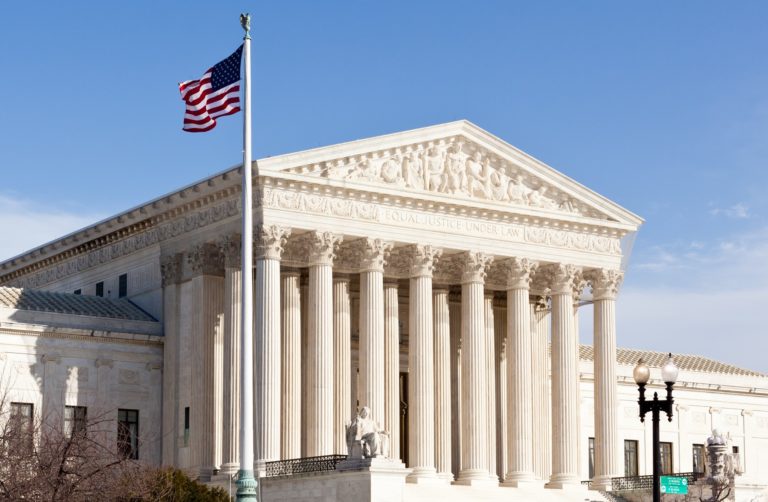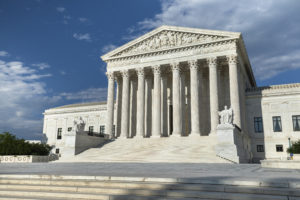Daily Journal: Supreme Court to hear important Voting Rights Act case

The Voting Rights Act is one of the most successful pieces of legislation ever enacted. In the years immediately after its passage, record numbers of African-American registered and voted. Indeed, by 2012 African-American voting rates were the highest of any demographic in the country. Nevertheless, each election cycle Americans have grown accustomed to a scourge of election-related litigation that allege various state and local voting changes are discriminatory. Case in point: Earlier this month, the U.S. Supreme Court agreed to hear a pair of cases — Brnovich v. Democratic National Committee and Arizona Republican Party v. Democratic National Committee — involving Arizona’s prohibition of so-called “ballot harvesting” and its policy against counting votes cast in a voter’s incorrect precinct.
Politicians debate the efficacy of these policies, and it’s hard to ignore how the “efficacy” of those policies tend to follow the politicians’ self-interest in reelection. But politics aside, the resolution of the questions presented in these cases will have significant legal ramifications.
The petitions ask the court to decide whether Section 2 of the Voting Rights Act prohibits enforcement of state election laws that disproportionately impact voters of a particular race, even in the absence of discriminatory intent. Should the court adopt the expansive reading of the Voting Rights Act pressed by the challengers — that a state law is presumptively invalid if it disparately affects any racial group — it could bring the act into conflict with a more fundamental law, the constitutional guarantee of equal protection.
The 14th Amendment’s equal protection clause guarantees each individual the equal protection of the laws. It generally prohibits race-based decisionmaking by government actors. But should the Supreme Court hold disparate impact sufficient to invalidate a neutral and generally applicable election law — as the 9th U.S. Circuit Court of Appeals did to invalidate Arizona’s out-of-precinct policy — state legislators will have no choice but to consider race in the crafting of electoral laws, including the drawing of legislative districts. Rather than eliminating race as a factor in voting policy, race would become the number one criterion. Such a reading of the Voting Rights Act would sweep away many legitimate election laws and render it extremely difficult to pass new ones. More significantly, it would directly conflict the equal protection clause’s promise that, in the words of Justice Antonin Scalia, “[i]n the eyes of government, we are just one race here. It is American.”
Fortunately, the text of Section 2 points towards a different result. The statute does not demand any particular racial outcome. Instead, a challenger must prove that minority voters “have less opportunity than other members of the electorate to participate in the political process and to elect representatives of their choice.” As the 7th Circuit wrote in sustaining Wisconsin’s photo ID requirement, Section 2 is an “equal-treatment requirement,” not an “equal-outcome command.” Since Arizona law affords every voter an equal opportunity to vote in his or her proper precinct — and also provides several non-precinct-based voting options — it has not denied anyone the right to participate in the election.
The equal-opportunity interpretation of Section 2 does not foreclose challenges brought in the absence of discriminatory intent. Indeed, a state that made voting much harder for some people than for others — such through limiting polling places or early-voting days in certain locations — would still violate Section 2 if the limitations resulted in extra hardship for minority voters. But a faithful reading of the Voting Rights Act would permit states to enact neutral laws supporting election administration (like Arizona’s requirement that a voter present himself in the proper precinct) and integrity (its prohibition on the third-party delivery of ballots) while hopefully limiting race-based decisionmaking on the floor of state legislatures.
While these cases will shape election law for decades, their implication to the equal protection rights of individuals is tantamount. To what extent can states group individuals according to their race and regulate according to group-identity? The right to equal protection of the law is an individual right, and a group-centered Voting Rights Act interpretation would run square into that constitutional promise. That is why it is so important that the Supreme Court adopt an interpretation of the Voting Rights Act that permits the enforcement of neutral, non-discriminatory voting regulations and discourages official consideration of race in statehouses.
This op-ed was originally published by Daily Journal on October 12, 2020.



